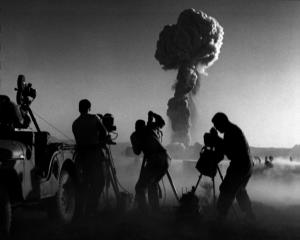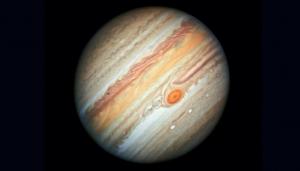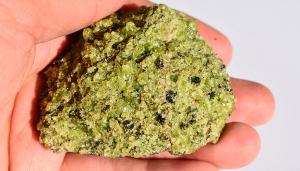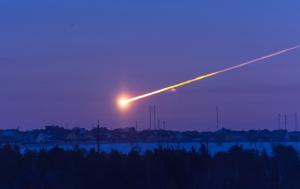LAB REPORT
Science and Technology Making Headlines
Aug. 4, 2017


Brewers could become self-sufficient by using LLNL’s microcapsules to capture carbon dioxide.
Something big is brewing
Brewers across the country are embracing new technology to tackle some of the industry’s most pressing sustainability challenges: emissions and water.
Carbon capture is usually tied to power plants and coal, but the process could hold promise for the recovery of CO2 at craft breweries. Engineers at the Lawrence Livermore National Laboratory have developed a technique to filter CO2 from power plants that could help breweries cut costs and reduce their CO2 emissions.
If applied to the beer industry, brewers could become self-reliant by reusing their own emissions and potentially derive income from selling excess CO2.


Operation Teapot is one of the many nuclear tests the public can see on YouTube.
At full blast
Hundreds of declassified nuclear test videos carried out in the U.S between 1945 to 1963 are now available on YouTube. These tests, which were kept secret at the time, were recorded on film and locked away in hidden vaults but, because they were made from organic material, they have been slowly decomposing.
Attempts to preserve them have a limited shelf life too, so weapons physicist Greg Spriggs of Lawrence Livermore National Laboratory has spent the past five years scanning roughly 4,200 films (from a trove of 7,000). More than 750 have been declassified by the government and 64 of these were released on YouTube earlier this year. These videos cover tests made under Operation Hardtack I, Operation Dominic, Operation Teapot, Operation Castle and more.


Jupiter not only is the largest planet in our solar system, it’s also the oldest, according to new research from Lawrence Livermore National Laboratory. Image courtesy of NASA.
Age of Jupiter
A Lawrence Livermore scientist and collaborators have found that Jupiter not only is the largest planet in our solar system -- it also is the oldest.
By looking at tungsten and molybdenum isotopes on iron meteorites, the team, made up of scientists from Lawrence Livermore and Institut fur Planetologie at the University of Munster in Germany, found that meteorites are made up from two genetically distinct nebular reservoirs that coexisted but remained separated between 1 million and 3-4 million years after the solar system formed.
"The most plausible mechanism for this efficient separation is the formation of Jupiter, opening a gap in the disc (a plane of gas and dust from stars) and preventing the exchange of material between the two reservoirs," said Thomas Kruijer of LLNL. "Jupiter is the oldest planet in the solar system, and its solid core formed well before the solar nebula gas dissipated, consistent with the core accretion model for giant planet formation."

A mantle nodule collected from San Carlos, Arizona, brought to the surface during a deep volcanic eruption about 1 million years ago. Olivine, which is the focus of the LLNL study, is the predominant light green-colored mineral that is present in this rock. Photo by Wyatt Du Frane/LLNL.
Mapping the mantle
Scientists at Lawrence Livermore believe their improved understanding of electrical conductivity inside Earth’s mantle will help them map the distribution of water inside Earth.
Earth is the only planet in the solar system to develop plate tectonics and large liquid water oceans on its surface. Planetary scientists believe the distribution of significant amounts of water inside Earth’s mantle is the link with the two phenomena.
Understanding the diffusion of hydrogen in the mantle is key to measuring the distribution of water inside Earth. Hydrogen plays a key role in encouraging electric conductivity, but researchers haven’t been able to accurately quantify the relationship between hydrogen and conductivity.


Researchers are using the most powerful supercomputers to produce simulations of asteroid impact scenarios, such as the meteorite strike in Chelyabinsk, Russia in 2013.
A smashing simulation
In support of NASA's Planetary Defense Coordination Office, researchers are creating 3D models and using one of NASA's most powerful supercomputers to produce simulations of hypothetical asteroid impact scenarios.
Their results help first responders and other agencies to identify and make better informed decisions for how best to defend against life-threatening asteroid events.
High-fidelity simulations of potential asteroids covering a wide range of sizes were run on the Pleiades supercomputer using NASA's Cart3D and Lawrence Livermore National Lab's ALE3D modeling software.





